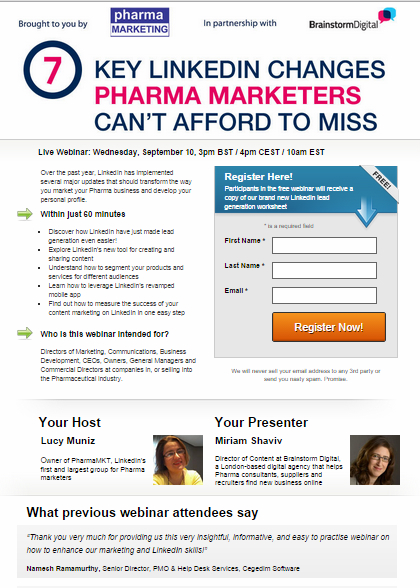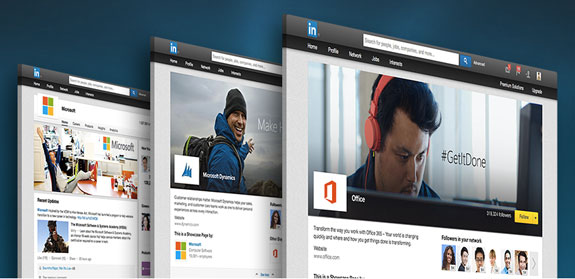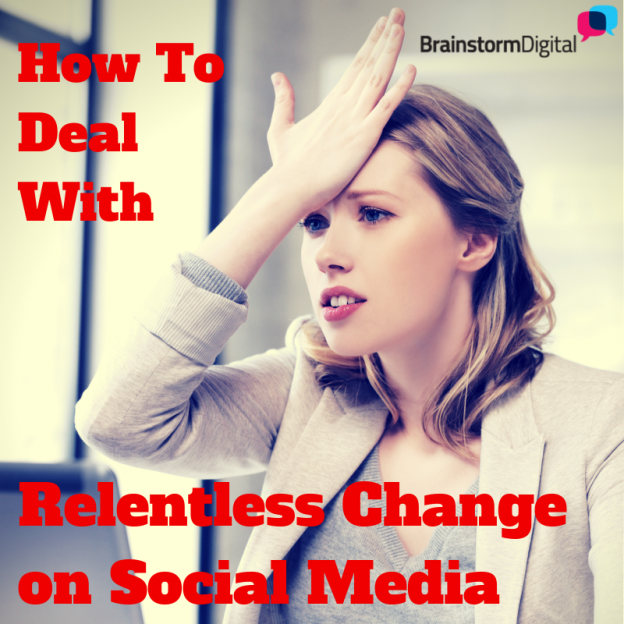
Congratulations: You’ve come up with a great idea for a webinar. Your title is catchy, you’ve lined up a superb speaker, you know that your material will be indispensable for your potential and existing clients.
But how do you make sure that they hear about it, register, and actually attend? Here’s your ready-made plan of action, to ensure that you get maximum results.
When you start planning
Pick a great partner. One of the best ways to boost attendance at your webinar is to run it in conjunction with another company that has access to the kind of audience you’re looking for. Two companies promoting a webinar together will inevitably draw more people than one doing all the work alone.
Make sure you pick a company that is not a direct competitor, which will also benefit from running the webinar with you, and which has a good mailing list.
If you want to run the webinar yourself, consider carefully whether you can bring in outside speakers. Anyone featured should play their part in getting an audience.
Consider logistics carefully. Make sure that your webinar will take place at a time that is convenient for your audience. This will depend on where they are geographically, and what kind of industry they’re in. Sometimes you need to experiment to figure this out. When you conduct a post-webinar survey, consider asking attendees what the best time for them might be, to get some firm data for next time.
Three to four weeks in advance
Create a landing page. How well you ‘sell’ your webinar on the registration page will make an enormous difference to whether people sign up or not – so make sure it is top-notch.
First, make sure it’s clean, attractive – and customised. Many webinar platforms like Gotowebinar do not allow you to change their format too much, so check out Leadpages or Unbounce, which offer a range of nice-looking templates.
Elements your landing page should include:
• The title of the webinar. Make sure your target audience can understand it. Too much jargon and it will turn people off.
• Who it’s aimed at. Spell it out!
• Benefits: What your target audience will get out of it.
• Who the key speaker is and why they are worth listening to.
• Testimonials from previous attendees. Having others promote you will always be better than anything you can say yourself!
• What free resources you are giving away during the webinar.
• Clips from previous webinars as proof of previous successes.
Don’t forget – make signing up as easy as possible. Don’t ask people for too much information.
Two weeks in advance
Use all available channels to drive people to your landing page. The main way you’re going to get people to your landing page will be email. Make sure that your message includes most of the elements on the landing page (you can leave out the clips, but almost everything else is essential).
If you’re working with a partner, make it easy for them – provide them with your text.
The best days to send out emails are Tuesdays, Wednesdays and Thursdays (avoiding the beginning of the week, when people are catching up, and the end of the week when people are wrapping up). Likewise these are the top days to hold webinars and ensure maximum attendance, but again, experiment with your audience.
Promote your webinar via email several times – two weeks before the event, and then much closer to the time. According to the 2014 Webinar Benchmarks report, 58% of all attendees register during the week of the event.
Other ways to promote your landing page include:
• Social media updates on all your channels
• Sponsored updates on LinkedIn – target members of relevant LinkedIn groups
• Advertising on Twitter – make sure you use a conversational tone
• Paid advertising on Facebook. You can target people quite closely, including those who have been on your website (provided you install the scripts on your website – do that now, even if you don’t want to use it yet!)
• Your website – advertise it on the homepage and in banners
• Your email – put a link to the registration page into your signature.
 Create additional marketing material. Why not write a blog that touches on the subject of your webinar, with a plug at the end? Or a little video preview? Distribute those via email and social media to your target audience as well, to drive up interest.
Create additional marketing material. Why not write a blog that touches on the subject of your webinar, with a plug at the end? Or a little video preview? Distribute those via email and social media to your target audience as well, to drive up interest.
Once people have registered
Around 60-70% of people who register for webinars don’t actually turn up on the day. This can be for a number of reasons; often they might miss it due to circumstances, find themselves detained in meeting, change their minds or just forget. In order to ensure that your registrants don’t forget or change their minds you have to keep on reminding them of your event, and keep them interested.
• When someone registers, make sure an email goes out confirming the date and time. (The same email can also prompt them to advertise that they are attending on Facebook or Twitter – drawing more people in!)
• In their welcome email after registration ask if they have any questions about the subject of the webinar, then….
• Send registrants a short video five days beforehand answering some of the questions. It’s a great teaser!
• Tell them they will be receiving a free gift. Example include downloadable resources such as an ebook or template. It has to be directly related to the subject of your webinar.
• Send out a reminder five days ahead of the event, one day ahead and an hour before.
• Send out a Google Calendar invite, so that they have the date written down.
Post-Webinar
Since the majority of people who register for a webinar normally never attend, you need to continue promoting it even once it’s over.
• Send a recording of the webinar to whoever has registered. Put a time limit on the availability of the video to encourage people to watch it.
• Post the webinar to your company website and make it available to download (in exchange for an email address). You can carry on promoting the recording on social media for as long as you like!
Webinars offer a great opportunity to engage with clients globally, to reach new prospects (adding them permanently to your email list) and to bolster your authority and credibility. With audiences for webinars growing and viewing times increasing, make sure you take advantage of this incredible platform – and promote what you do heavily!
What tips do you have for promoting webinars? What’s worked well for you in the past – and what’s worked less well? Please share your experience in the comments!







